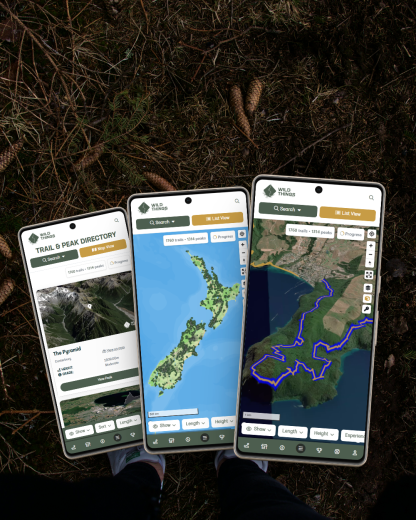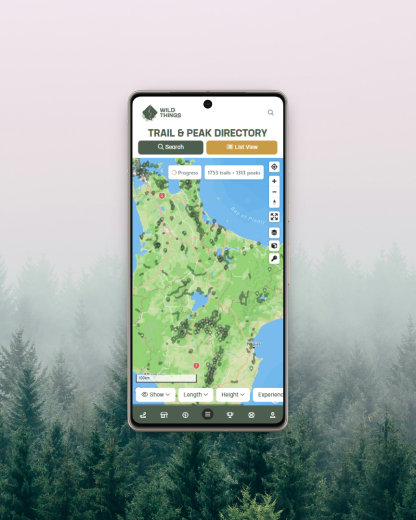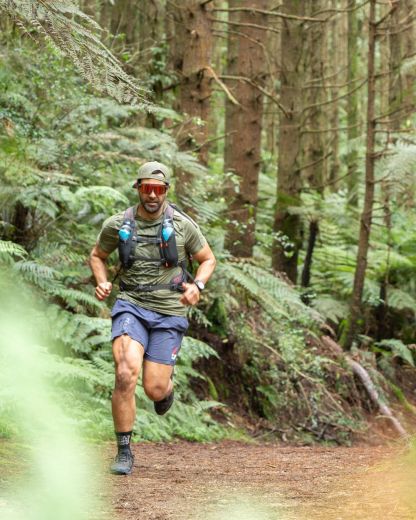Madeira Island Ultra Trail

Keri Devine
May 6, 2018 ShareIt’s never easy going into a race unprepared and unfit, but that’s the situation I found myself in at the start line of the Madeira Island Ultra Trail. Instead of spending my summer training in the Tararuas and around the hills of Wellington, I was enduring a cold Scottish winter. One of the snowiest winters on record. Apart from a ‘panic event’ in the Canary Islands 2 weeks out from the race, my hill training had consisted of small climbs in Aberdeenshire and the odd outing in bigger hills (going a lot slower) wearing microspikes in the snow. Not ideal training for a 115km long ultra with 7,200m of ascent on some of the gnarliest terrain around. However, it was a sold-out event, the flights were booked, and my partner Rob also had an entry. We made a pact to run together, and we would get through it. Somehow.

The race route. Image courtesy of www.miutmadeira.com

Race profile. Image courtesy of www.miutmadeira.com
The race starts at midnight in Porto Moniz in the northwest corner of the island and finishes in Machico on the eastern coast. Runners are bussed from Machico to the start line at 9.30pm, giving no time to get a nap in beforehand. Midnight starts are notoriously difficult as you’ve already been awake all day and depending on your speed, there’s a good chance you’ll be out for part of the following night too.
The race started bang on time and we all left the town to the sound of cheering spectators. Barely 800m into the race, we were into the first climb. The hill is small compared to what lay ahead, but it quickly spread the field out. Coming down the first hill, the local villagers were out in force, cheering everyone on and singing. We could hear them long before we could see them.
We were then straight into the first of the three major climbs, 1100m of vertical ascent on technical single track up to the first checkpoint at Fanal. Last year, runners were blessed with warm, dry weather and sunshine, we were not so fortunate. By the time we got to Fanal, it was raining hard, and the tracks were turning to mud. And it was cold. There are no requirements for runners to take any warm clothing (only a waterproof jacket), but given the forecast, I’d packed a long sleeve top, hat and gloves – I wore every piece of clothing I had. I learnt later that some runners were verging on hypothermia and withdrawing by the first checkpoint.
Throughout the night, we stopped as little as possible to keep warm, making it over two of the major climbs, arriving at the half way checkpoint of Curral das Freiras (60km) around midday. We’d already completed more than 4,500m of climbing and only had 55km to go. Easy!

Between the mountains ranges, near the half way point at Curral das Freiras
We had been preparing to push ourselves harder during the second half of the race (the second half is less technical, with less climbing and the final 25km is pretty much downhill).
But things rarely go according to plan and soon after leaving the checkpoint, Rob started vomiting.
The most spectacular section (and the section I was looking forward to the most) was also upon us - the last major climb. A 1,200m vertical ascent up to Pico Ruivo and Pico Arieiro. At the top, we would be rewarded with a 360-degree view of the mountains. The trail goes up literally thousands of steps (concrete steps, rock steps, wooden steps), all of which are at heights difficult to run on, along broken teeth-like mountains with sheer cliffs on the sides, and through tunnels, some which are long enough to need head torches. Most of this section, I ran by myself, having abandoned Rob at the side of the trail while he vomited (actually, he told me to carry on without him as he didn’t want to hold me back, it wasn’t my idea).

Running through tunnels
However, the whole time, my mind kept wandering back to him. How was he doing? Would he finish? Should I wait for him? Sometimes it’s better to start alone and finish alone and compare notes at the finish, rather than splitting when the other isn’t well. It was playing on my mind and I spent as much time looking back along the trail as I did forward to see if I could spot him. I soon came to realise that it would be better to finish what we’d started together and who cares how long it takes.

Taking time to enjoy the views from the summit of Pico de Arieiro
I don’t remember that much more of the second half. I remember it being a lot more runnable, and the trails were more forgiving, but what I remember most is that the two long races had joined trails (an 85km race starts at 7am and joins the MIUT course) and the faster, fresher runners on the 85km course come bounding behind you asking to pass. I don’t hesitate to move out of the way, but with 900 starters in the MIUT and over 600 starters in the 85km ultra, the single-track trails get crowded and constantly moving off and back on the trail gets pretty frustrating, especially when you’ve had no sleep. I’m sure for some, this might be motivating, spurring you on to run faster, but for me it was just demoralising. (Mental note: make sure I train properly next time, and it won’t bother me so much).
We had hoped to finish within 24 hours but with Rob being so ill, all hopes of a strong finish were gone and our main aim was just to get there. Approaching the final checkpoint, Rob vomited (quite spectacularly) in front of one of the volunteers on the trail who immediately called for back-up and Rob was escorted down to the following checkpoint and sent to the medic tent. We were 12km from the finish. Health and safety of runners is taken incredibly seriously here, and it was fantastic to see how well he was looked after, though we were both rearing to go (OK, well, I was. I think Rob was quite happy being fussed over by the medics). After what seemed like an eternity, Rob was released, and we made our way to the finish line under the cover of darkness.
We could see and hear the finish line from the top of the final hill. All we had to do was run along one more levada (irrigation channel) and down the hill into town. We crossed the finish line in Machico exhausted, but also delighted (and relieved). We’d done it! Around half of the field didn’t finish.

Crossing the finish line together!
Before the race, I’d been really concerned with the lack of suitable training (especially the lack of hills) and whether I’d be able to finish. However, as the saying goes ‘When you really want to do something, you will find a way. When you don’t, you’ll find an excuse’.

Podium! Somehow, I even managed to get a category prize (second placed vet F45 category)
It’s very rare for me to not want to go back to do a race again, and I know I said to Rob (more than once) ‘never again’. But the memories of pain are already fading, and I know I could prepare better for next year. I just know it. So perhaps, 'never again' doesn’t really mean never? It might even mean ‘next year’!
All photos by Canofotosports.com


